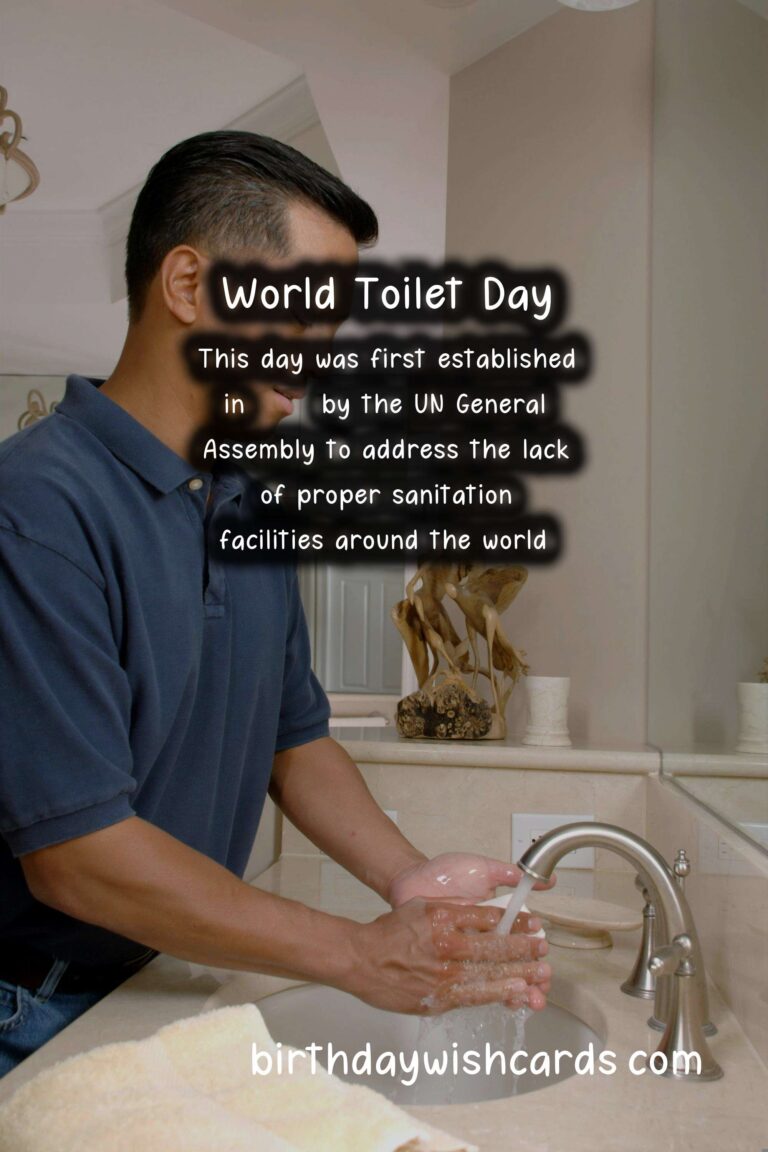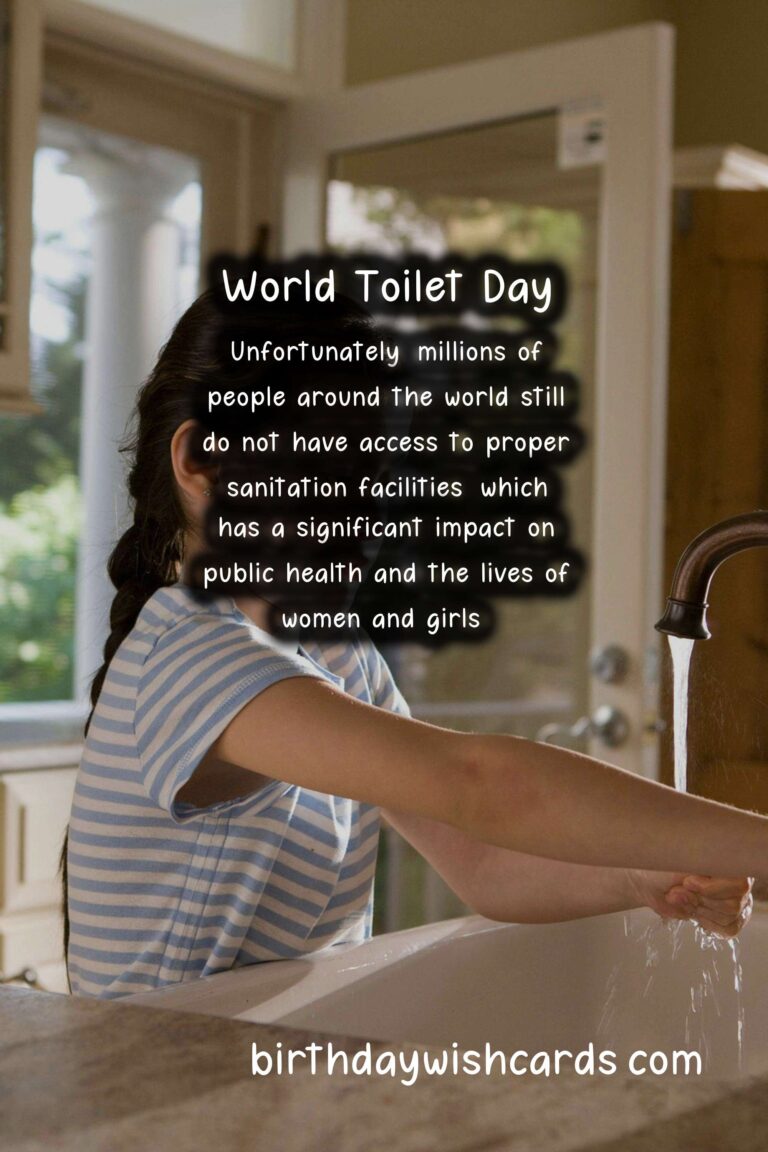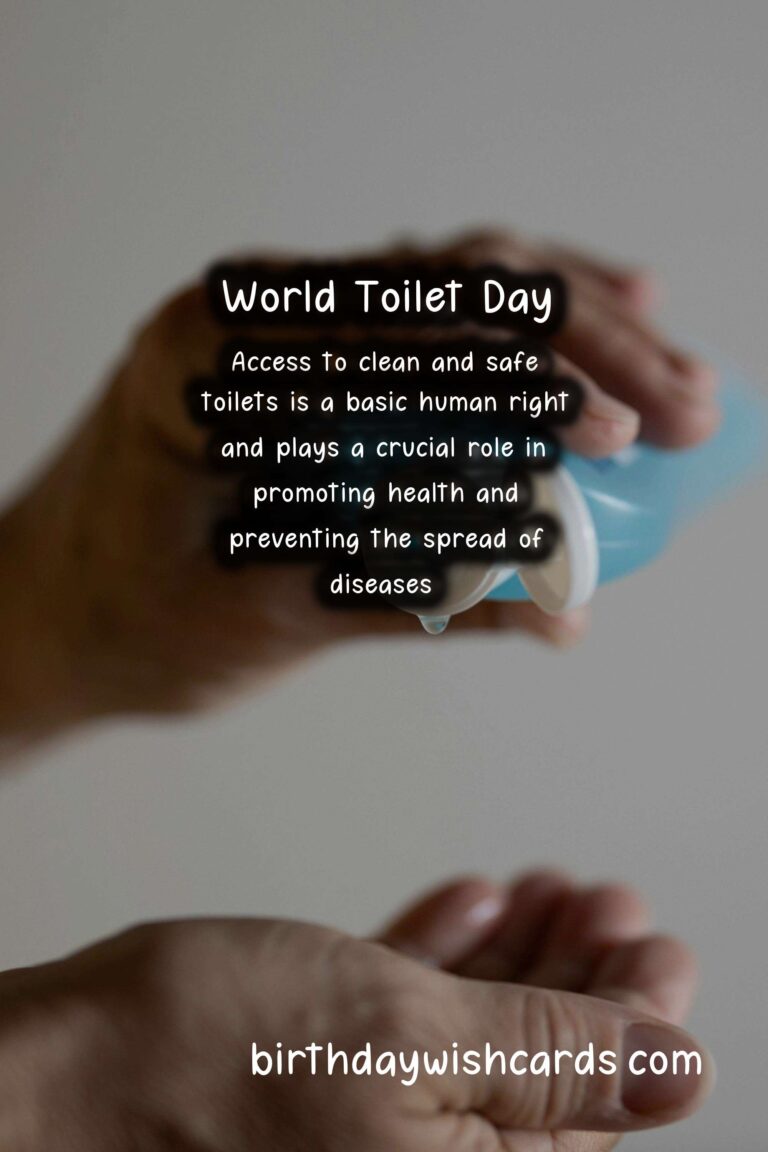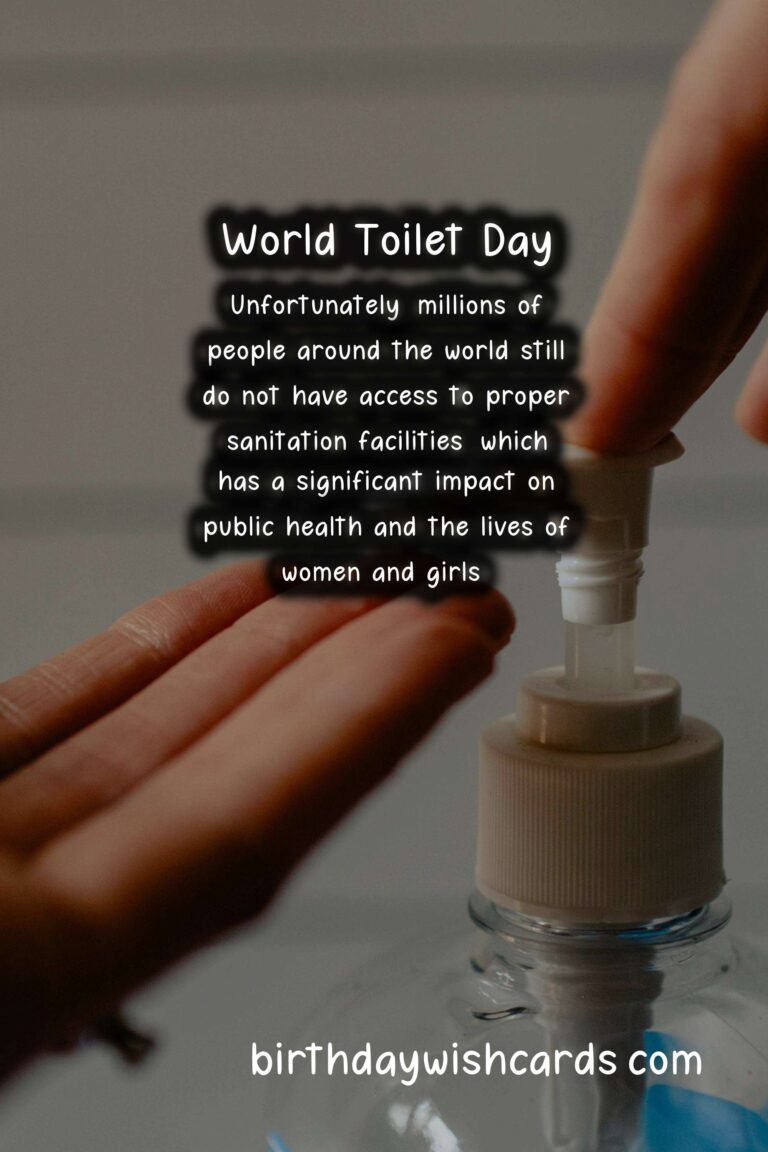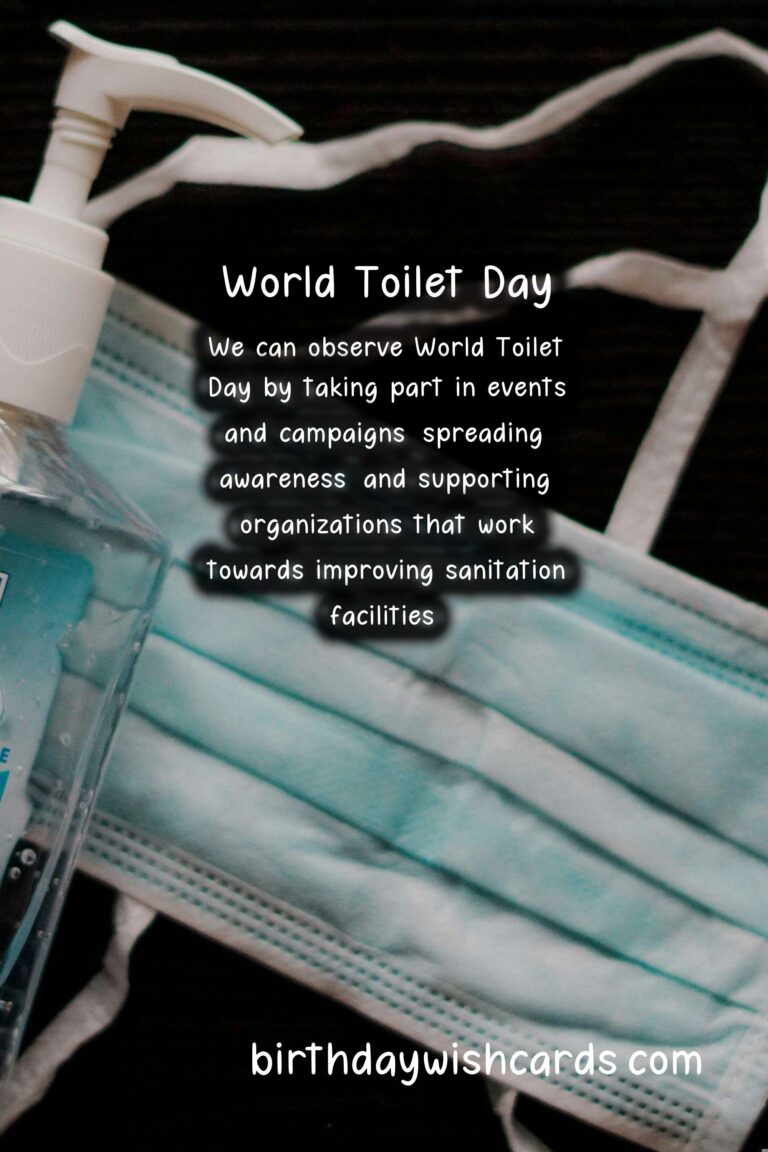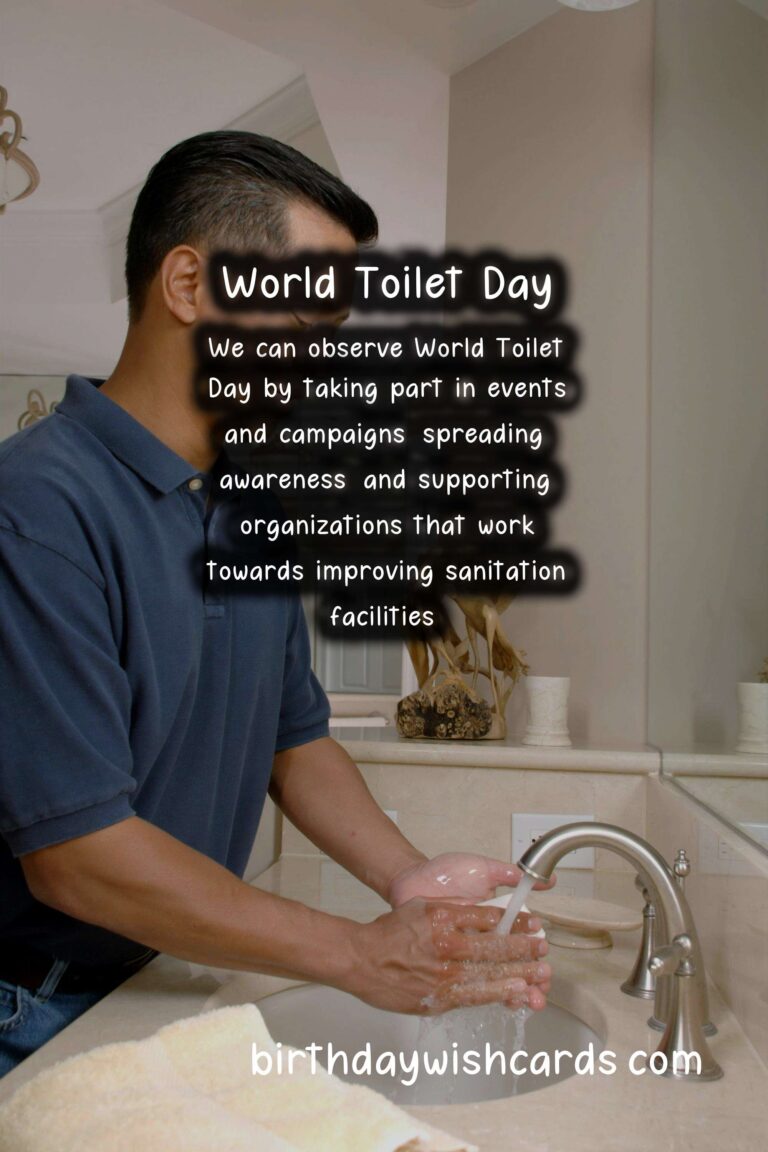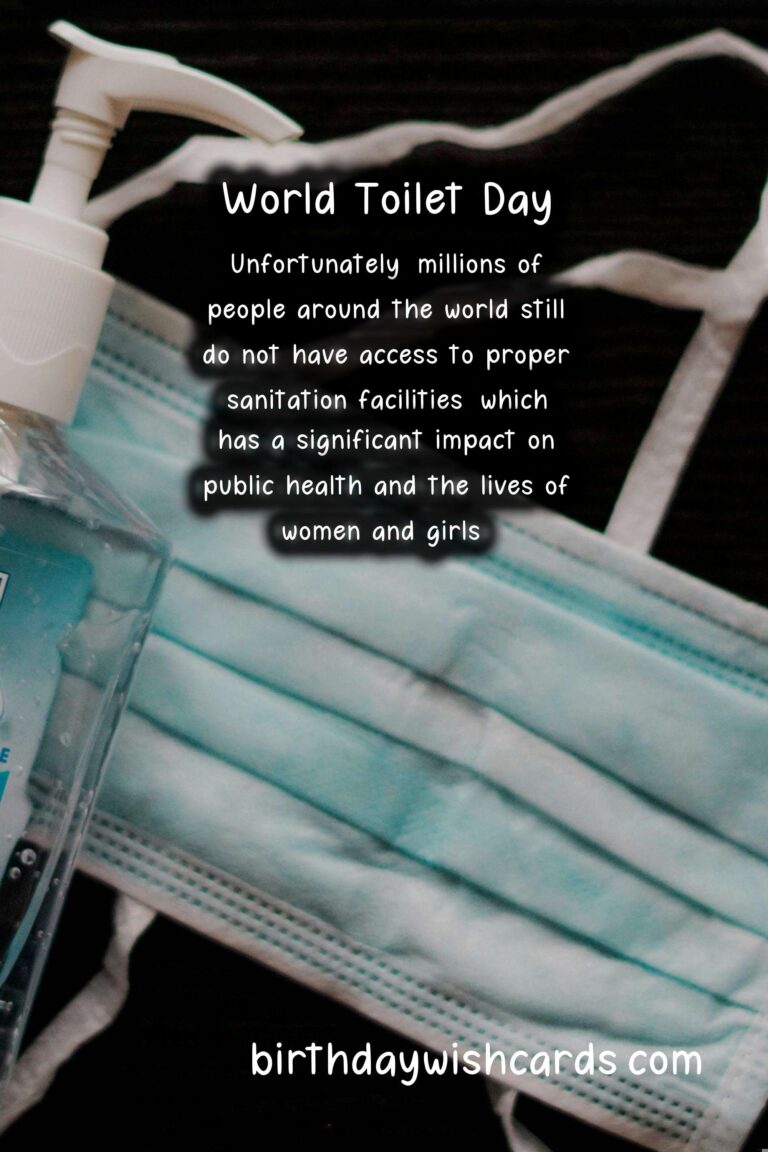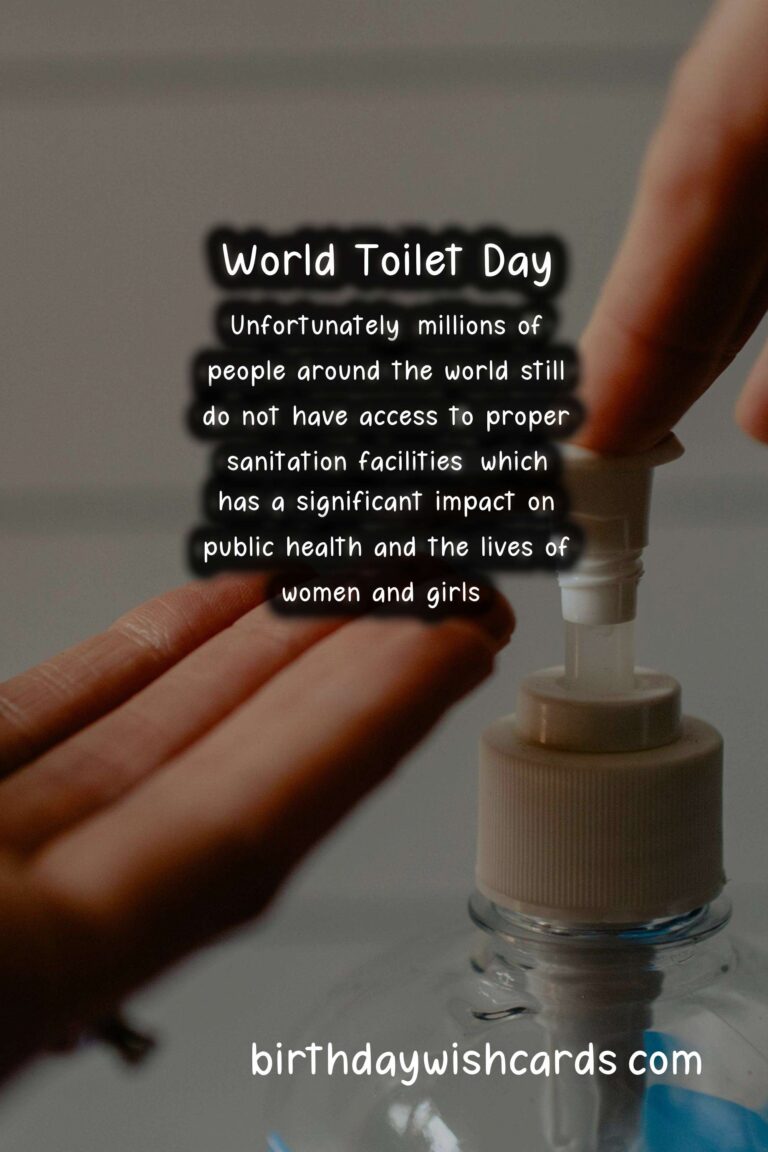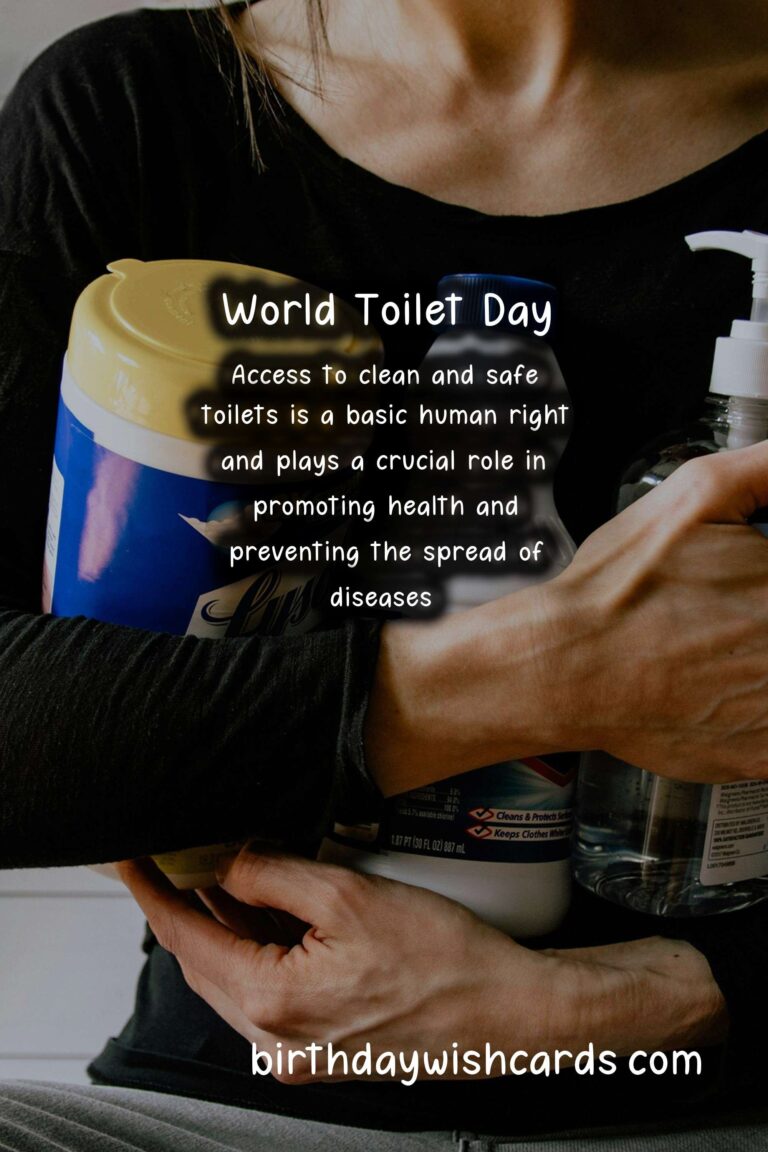 World Toilet Day is a United Nations (UN) observance marked every year on November 19th. This day aims to raise awareness about the global sanitation crisis and the importance of having access to clean and safe toilets. It is a day to reflect on the billions of people around the world who still do not have access to proper sanitation facilities and the impact it has on their health and well-being.
World Toilet Day is a United Nations (UN) observance marked every year on November 19th. This day aims to raise awareness about the global sanitation crisis and the importance of having access to clean and safe toilets. It is a day to reflect on the billions of people around the world who still do not have access to proper sanitation facilities and the impact it has on their health and well-being.
The History of World Toilet Day
World Toilet Day was first established in 2013 by the UN General Assembly to address the global sanitation crisis. The celebration of this day was made official on November 24th, 2013, with an official UN resolution. Ever since then, this day has been commemorated to bring attention and generate action on the global sanitation crisis.
The Importance of Toilets
Toilets are an essential part of our daily lives. We often take them for granted, but access to proper sanitation facilities is a basic human right. Toilets play a critical role in promoting hygiene and health, especially during a global health crisis like the COVID-19 pandemic. They help to prevent the spread of diseases and protect the environment. Unfortunately, millions of people around the world still lack access to clean and safe toilets. According to the World Health Organization (WHO), around 4.2 billion people, or 55% of the global population, do not have access to safely managed sanitation. This means that they lack basic sanitation facilities like toilets, latrines, and hygiene supplies. This puts their health and dignity at risk and hinders their economic and social development.
The Impact of the Sanitation Crisis
The sanitation crisis has a significant impact on public health. Poor sanitation facilities and lack of access to clean water are major contributors to the spread of diseases like diarrhea, cholera, and typhoid. Every year, these diseases claim the lives of thousands of people, mainly children under the age of five. Moreover, the lack of proper sanitation facilities also affects the lives of women and girls. The absence of clean toilets and hygiene facilities in schools and public places leads to girls missing out on school during their menstrual periods. This not only affects their education but also their self-esteem and sense of dignity.
How to Observe World Toilet Day
On this day, different organizations and communities come together to highlight the importance of toilets and draw attention to the global sanitation crisis. Various events and campaigns are organized to raise awareness and educate people about the importance of proper sanitation facilities. Some ways to observe World Toilet Day include: – Spreading awareness on social media by using the hashtag and sharing information about the global sanitation crisis. – Volunteering or donating to organizations that work towards improving sanitation facilities in developing countries. – Educating yourself and others on proper hygiene practices and the importance of sanitation for public health. – Organizing a community clean-up or public toilet maintenance day.
In Conclusion
World Toilet Day is an important day to recognize the global sanitation crisis and take action to end it. We must work towards ensuring that everyone has access to clean and safe toilets to promote health, dignity, and sustainable development. Let us observe this day by spreading awareness and advocating for the rights of those who lack access to proper sanitation facilities. On November 19th, we celebrate World Toilet Day to raise awareness about the global sanitation crisis. This day was first established in 2013 by the UN General Assembly to address the lack of proper sanitation facilities around the world. Access to clean and safe toilets is a basic human right and plays a crucial role in promoting health and preventing the spread of diseases. Unfortunately, millions of people around the world still do not have access to proper sanitation facilities, which has a significant impact on public health and the lives of women and girls. We can observe World Toilet Day by taking part in events and campaigns, spreading awareness, and supporting organizations that work towards improving sanitation facilities. 
